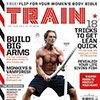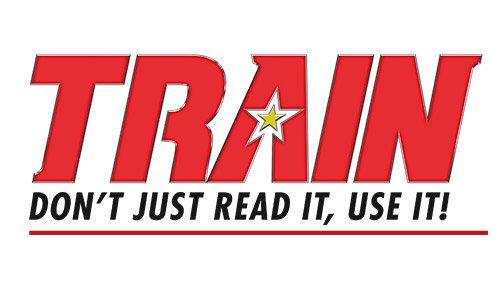
Can You Spot-Target Fat Deposits?
The short answer is no, but the long answer is yes. Here's the new thinking that might challenge everything you thought you knew about spot-reducing fat.
Spot-reduction: A pairing of words with a unique ability to make certain exercisers angrier than a startled honey badger. Perhaps their annoyance stems from that moment they were first told that the hundreds of sit-ups they'd been doing hadn't actually been zeroing in on the fat covering their abs.
Their fury at having wasted their time and energy is indelibly etched into their sub-conscious, so the moment anyone mentions the possibility of spot-reduction being of benefit, they explode and aggressively inform the unsuspecting spot-reducer that their blasphemous notions have contravened fitness's holiest law: Thou shall not enjoy the freedom to choose where thou loses fat.
This dogma is so deeply entrenched in the fitness mindset that anyone who tries to say differently is metaphorically lynched and then thrown into the pit of zero-credibility.
Well, here's some news for you: spot reduction does work, and you're about to find out the how, the why, and the when. Before you lose your temper, please read on, because you might just be about to lose a part of you that you're not too fond of.
How You Burn Fat The Basics
The Gravy Train Supplies Energy
Your liver stores glucose (energy) and gradually releases it into the conveyor belt that is your blood stream. This is the energy you use for things like keeping your legs moving.
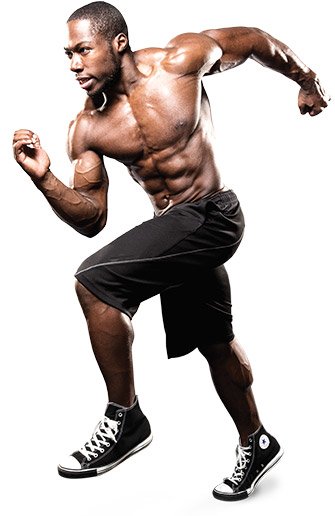
Your Brain Taps Into Your Savings
Once the glucose runs out, a signal gets sent to your brain, which directs your body to tap into your stored fat as an energy source. This is called ketosis—a process where you start to burn fat for energy.
Fat Cell Liberation Occurs
Hormones that enter your blood stream activate an enzyme called lipase, which tells your fat cells to release their triglycerides so they can hitch along on the same ride.
Energy Is Taken Where It's Needed
Your liver snatches some of these triglycerides from your blood and converts them into glycerol for energy, which is pumped to your working muscles. The rest of your fat cells are taken directly to the working muscles to be used as fuel.
Fat Cells Shrink
Now that your body has begged for energy from your fat cells, they will lose their plumpness—though they'll never disappear. This makes the fat tissue shrink and your muscle striations pop.
Why You Get Stubborn Fat
When you're in your 30s, your metabolism slows. That means the same food portions will result in heftier figures on the scale. You might be doing what you've always done, but you'll gradually start to see very different results from your diet and training.
Obviously, men are prone to storing these unused calories on their bellies. From an evolutionary perspective, it's placed there to protect your vital organs and bones, but this protective instinct is stronger in some people than others.
In a study in "Obesity Research," overfed participants of a similar weight and height ate an extra 1,000 calories a day.1 Some participants gained 31 pounds while others gained just 10 pounds. "Those results may be staggering, but genetics are just one player in obesity and are very rarely the main source," says Dr. Graeme Smith, one of Australia's foremost researchers in the field of genetics, muscle, and nutrition.
Despite this notion, your family tree does play a part. If your dad can comfortably rest a beer on his gut during the game, it's likely your beer will occupy that same real estate one day.
Heritability can account for as much as 56 percent of your abdominal fat, according to research in the journal "Metabolism."2 But, before you phone dad to blame him for your lack of a six-pack, it's important to know why some fat has a tendency to be stubborn.
Fat cells have various receptors, called alpha- or beta-receptors. The betas are your heroes, encouraging fat to be burnt. The alphas are the villains that tell it to be stored. Stubborn fat areas have more alpha-receptors, so in order to burn more fat in these body parts you want more beta-receptors and less alphas. The biggest player in creating a more favorable alpha-beta ratio is insulin because stubborn fat is more insulin-sensitive, which sets your fat cells into storage mode when you eat a high-carb diet.
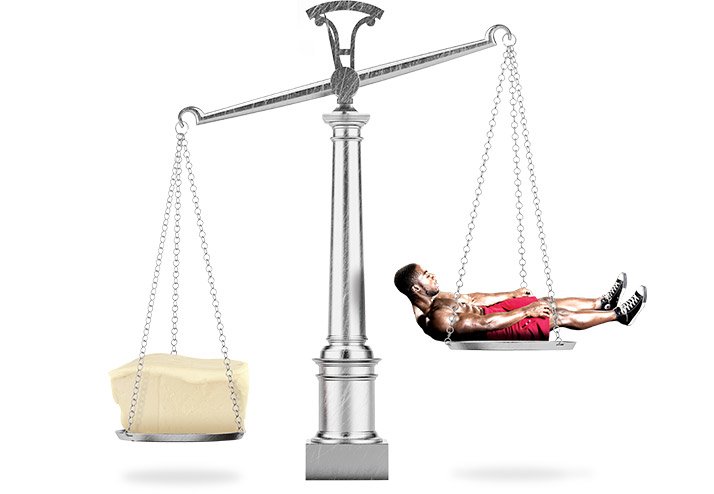
The fix: a low-carb diet and exercising while in a fasted state. That explains why new research at Northumbria University, UK, discovered that men burned up to 20 percent more body fat by exercising in the morning on an empty stomach.3
When you exercise in a fasted state, your body has no other option but to draw energy from your stored fat reserves, aka love handles. Now you know why your fat is settling in your least favorite areas, and here's how you can strong-arm it off the body parts where it's least welcome.
Dismantling Your Storage Deposits
Probably one of the most famous strength coaches on the planet is Canadian Charles Poliquin. He created a system called Biosignature Modulation Method that deals specifically with spot reduction.
This system takes your hormonal profile by obtaining fat measurements via calipers on twelve specific spots on your body. That data is then used to figure out what hormones are out of whack so you can use supplements, improve your diet, and strength train in new ways to correct this balance.
This might sound like the recipe for pretty much all body fat reduction, but here's a breakdown of how his system works.
Biosignature Modulation Method |
|||
| Hormone | Abnormal Skin Fold Measurement | ||
| Cortisol | Umbilical (stomach) | ||
| Insulin | Supra (love handle), subscapular (upper back) | ||
| Estrogen | Quads, hamstrings | ||
| Testosterone | Pectorial (chest), triceps | ||
| Growth hormone | Knee, calf | ||
| Thyroid | Mid axillary (upper abs below end of ribs) | ||
It's a pretty out-there concept, and is certainly not without its critics who attempt to cite a lack of scientific evidence. Despite their attempts to discredit it, there is mounting research in the journal "Biology Of Sex Differences" that found hormones do have a role to play in deciding where you store fat.4
But the scientists didn't stop there. Another study in the "Journal of Clinical Endocrinology and Metabolism" unearthed a loss of fat in the upper arm when elevating testosterone to above-normal levels.5 And research at Yale University found that stress and its accompanying hormone cortisol can cause excess abdominal fat.6
If you're having problems shifting fat in a particular area, your first step should be to get your body fat measured with calipers by a professional. Next, get your hormones and blood tested to see if there is a correlation between your flab and where you're storing the largest quantities
of it.
"This system will never replace a medically conducted blood and hormone test," says Joseph Coyne , a sports nutritionist, performance coach, and qualified Biosignature Practitioner. "But it will give you a good approximation of what your problems might be, and is an excellent starting point for losing weight from a certain area."
"Sadly, if you have a body part that's become a preferred fat-storage point, then you're still more likely to lose fat off the rest of your body before you begin to lose it from this body part," Coyne adds. "For guys, that storage point is likely to be the stomach area; for girls it's likely to be the hips and thighs. It's a survival mechanism and works on the principle of first on, last off.
"If you're serious about using this system, then get your skin fold measurements and body fat tested once a month to track your changes, thus charting whether supplementing with hormones can help reduce fat in your chosen area."
Choose Where You Lose
Fat storage is simple: eat more than you burn and you create a surplus that gets stored in the places you want it least. Unfortunately, it doesn't settle on your biceps, but makes a home on your stomach. And that's what sparks the dream of spot reduction, which as it turns out is a dream worth living.
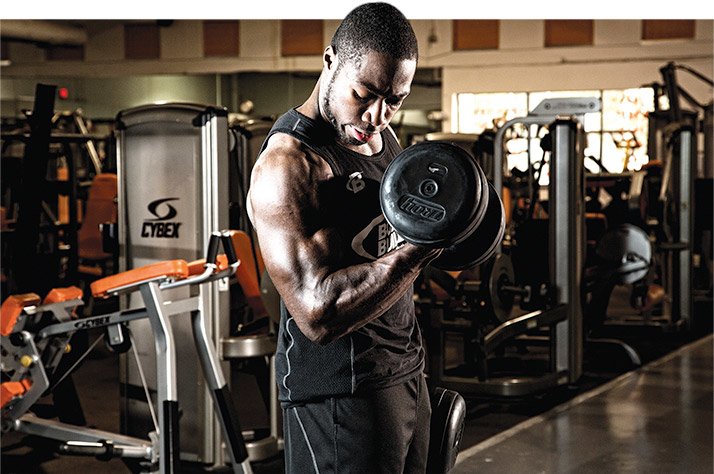
In 2007, a study published in the "American Journal of Physiology Endocrinology and Metabolism" measured changes in fat mass during high-rep knee extensions.7 They also looked at the blood flow and fat breakdown in fat tissue adjacent to working muscles and in fat tissue around inactive muscles in the other leg.
After 30 minutes of doing knee extensions with one leg, subjects switched legs and did knee extensions for 120 minutes using more weight. Blood flow and fat breakdown were greatest around the working muscles. The take-home message: Specific exercises can cause spot-reduction because blood flow and fat use is higher in the adipose (fat) tissue closest to working muscles.
The trouble is, these specific exercises work for spot-reduction, but only in tiny increments. You won't see your abs pop after a few sit-ups; it's a bit like taking a few grains of sand off a beach. So it's kind of useless and people who say it doesn't work are mostly correct, but not technically speaking.
Old-school bodybuilders such as Frank Zane, Arnold, and Franco Columbu firmly believed in doing hundreds of sit-ups not only to build abs, but also to chip away at the remaining body fat in the abdominal region before they stood on stage. You might argue that their ripped midsections were the result of a super lean pre-contest diet, but there is another mechanism at play: blood flow.
The previously mentioned study found that blood flow was greatest around the working muscle and proved essential for fat extraction. Poor blood flow to areas such as your abs and obliques creates poor fat loss from those areas. In fact, research in the journal "Diabetes" found that adipose (fat) blood flow doesn't increase enough to allow the delivery of all the fatty acids released into your blood supply.8
This means is that if you increase the blood flow to a particular body part then you improve the ability to burn fat in the surrounding area. So for you to spot-reduce fat in a particular area, you will need to do excessively high reps. A smarter way is to combine high-reps with high-intensity cardio.
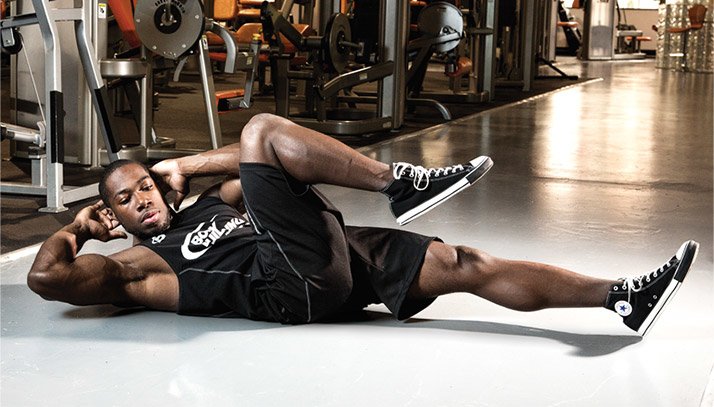
"Interspersing high reps abs work with cardio will create a systemic effect thanks to the increased blood flow all around your body, and also drive a localized fat burning affect," says Coyne. "Over time this strategy will create the right conditions to lose fat off your target area. You won't exclusively lose fat off your abs because you'll lose it everywhere, but there's no doubt that you will use more of the triglycerides (fat) around your target area."
Increasing the blood flow to a target muscle will help mobilize that muscle's covering layer of fat and help you carve a more ripped midsection.
Abs-Revealing Interval Training
The trick with any spot-reduction workout is to intersperse a fat-burning activity such as interval training with high repetitions of an exercise that targets the area you want to lose fat from. Alternate between 5 to 10 minutes of the cardio exercise, then 1 to 2 minutes on the strength training exercise that targets the area you want to lose fat in.
Be warned: This kind of strategy is unlikely to be a good fit for someone who is obese, but will yield results for someone who is already fit and wants to trigger some pinpointed fat loss in a problem body part. In other words, you still need to be eating properly and training hard for this kind of strategy to act as the cherry on top that'll help you achieve your goals faster.
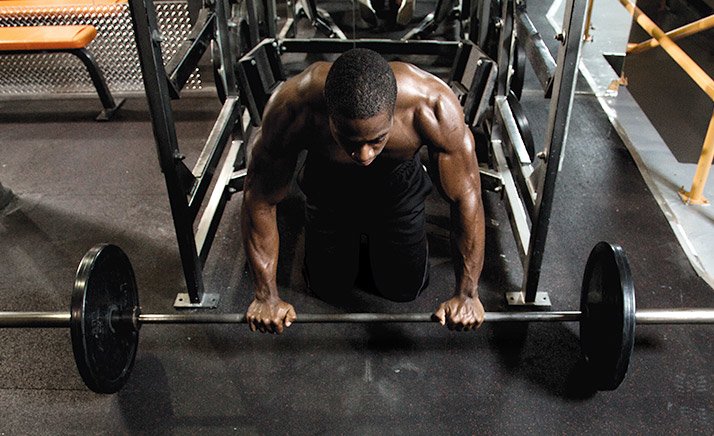
- Warm up by jogging slowly for five minutes.
- Sprint for 30 seconds, then jog or walk for 60 seconds. Repeat three times.
- Do bicycle crunches for 90 seconds.
- Lie on your back with your feet up in the air and your knees bent to 90 degrees. Lace your fingers behind your head.
- Bring the knees in toward your chest and lift the shoulder blades off the ground without pulling on your neck. Straighten your left leg so it is at 45 degrees to the floor while turning your upper body to the right, bringing the left elbow toward the right knee. Switch sides, bringing the right elbow towards the left knee. Continue to alternate sides and while pumping your legs back and forth in a cycling motion.
- Sprint for 30 seconds, then jog or walk for 60 seconds. Repeat three times.
- Do barbell rollouts for 90 seconds.
- Load a barbell with 10-20lb plates and stick on some collars. Kneel on the floor and grab the bar with an overhand shoulder-width grip. Position your shoulders directly over the barbell and keep your lower back naturally arched.
- Slowly roll the bar forward, extending your body as far as you can without letting your hips sag. Pause for two seconds and reverse the move to return to the start.
- Sprint for 30 seconds, then jog or walk for 60 seconds. Repeat three times.
- Do bicycle crunches for 90 seconds.
- Sprint for 30 seconds, then jog or walk for 60 seconds. Repeat three times.
- Do barbell rollouts for 90 seconds.
- Sprint for 30 seconds, then jog or walk for 60 seconds. Repeat three times.
References
- Bouchard, C., Tremblay, A., Després, J., Thériault, G., Nadeauf, A., Lupien, P., ... Fournier, G. (1994). The Response to Exercise with Constant Energy Intake in Identical Twins. Obesity Research, 2(5), 400-410.
- Pérusse, L., Després, J., Lemieux, S., Rice, T., Rao, D., & Bouchard, C. (1996). Metabolism, 45(3), 378-382.
- Gonzalez, J., Veasey, R., Rumbold, P., & Stevenson, E. (2013). Break-fast and exercise contingently affect postprandial metabolism and energy balance in physically active males. British Journal of Nutrition, 110(4), 721-732.
- Karastergiou, K., Smith, S., Greenberg, A., & Fried, S. (2012). Sex differences in human adipose tissues – the biology of pear shape. Biology of Sex Differences, 3(1), 13-13.
- Woodhouse, L. (2004). Dose-Dependent Effects of Testosterone on Regional Adipose Tissue Distribution in Healthy Young Men. Journal of Clinical Endocrinology & Metabolism, 89(2), 718-726.
- Stress May Cause Excess Abdominal Fat in Otherwise Slender Women, Study Conducted at Yale Shows. (2000, September 22). Retrieved from http://news.yale.edu/2000/09/22/stress-may-cause-excess-abdominal-fat-otherwise-slender-women-study-conducted-yale-shows
- Stallknecht, B., Dela, F., & Helge, J. (2007). Are blood flow and lipolysis in subcutaneous adipose tissue influenced by contractions in adjacent muscles in humans? AJP: Endocrinology and Metabolism, 292(2), E394-E399.
- Karpe, F., Dickmann, J., & Frayn, K. (2011). Fatty Acids, Obesity, and Insulin Resistance: Time for a Reevaluation. Diabetes, 60 (10), 2441-2449.
- Bouchard, C., Tremblay, A., Després, J., Nadeau, A., Lupien, P., Thériault, G., ... Fournier, G. (1990). The Response to Long-Term Overfeeding in Identical Twins. New England Journal of Medicine, 322(21), 1477-1482.
- Bjorntorp, P. (1997). Hormonal control of regional fat distribution. Human Reproduction, 21-25.
